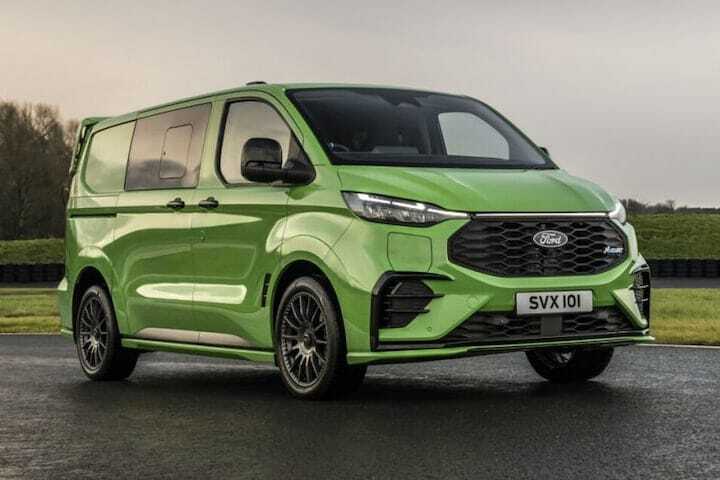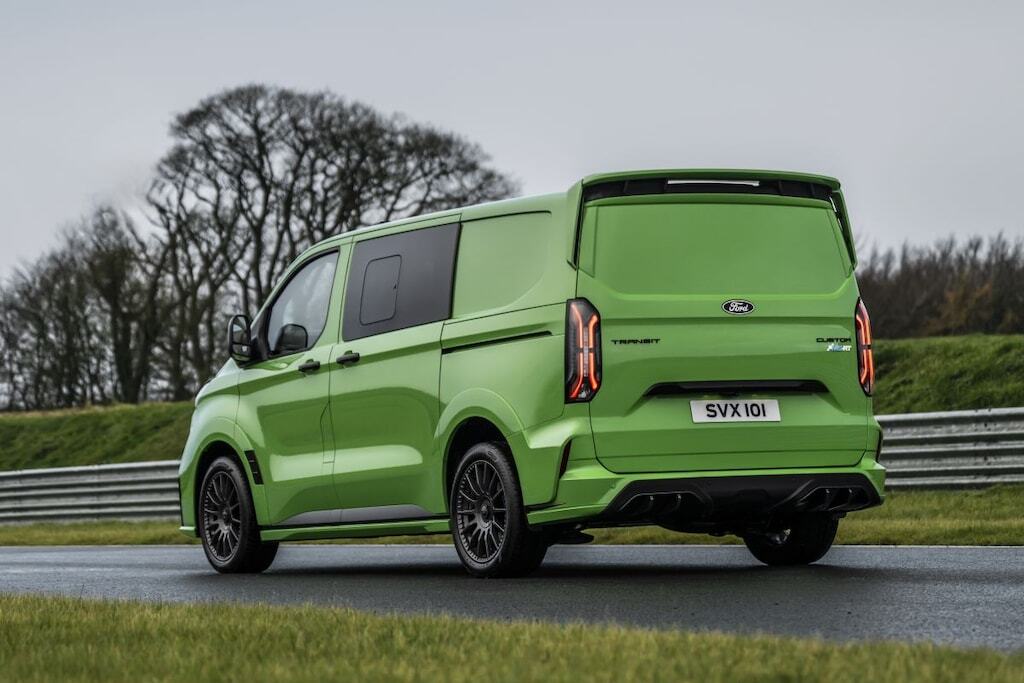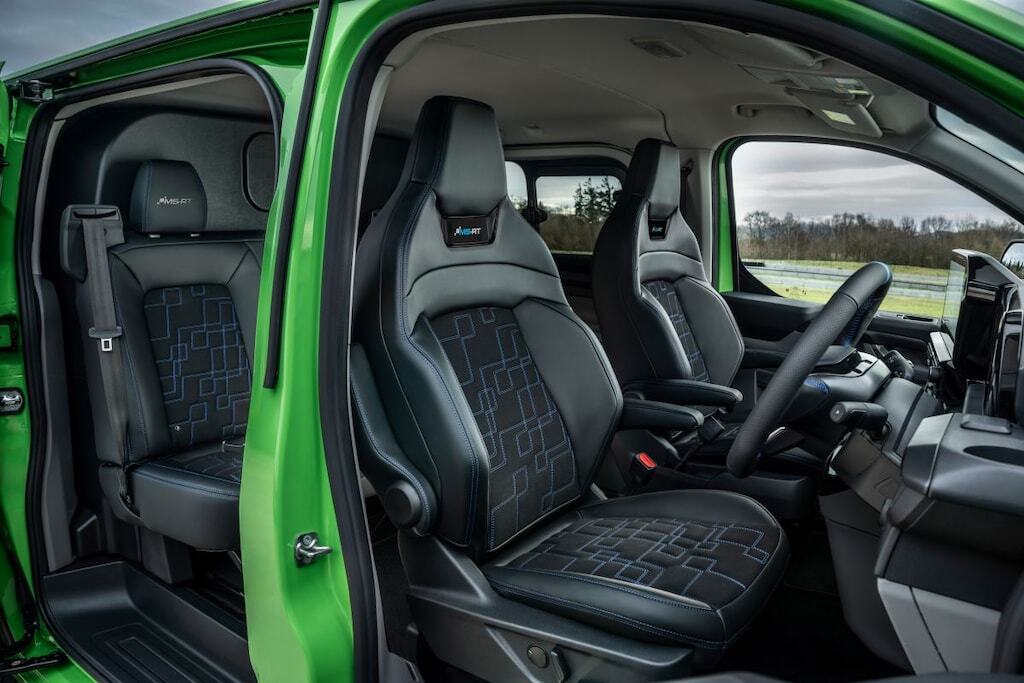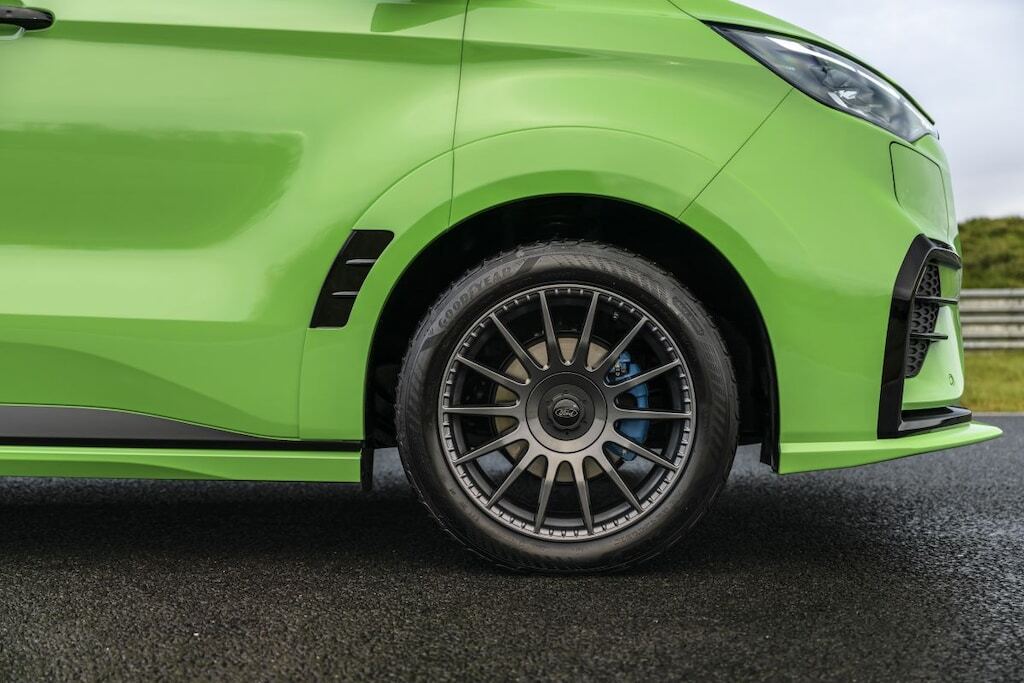
You see it all too often these days: common company cars that are spectacularly adorned with, for example, a body kit, a modified chassis, and a set of wide wheels. Is this a trend?
They regularly pass by on the street: vans with, for example, extended wheel arches, a lowered chassis, and a large spoiler. Not only small companies make these kinds of adjustments, but also a major player like Ford sees potential in this part of the market. In collaboration with the British company MS-RT, the brand delivers around five thousand sporty versions of the Transit Custom and the Ranger on an annual basis, although the latter is not available for the Dutch market.
According to James Kerr, design boss at MS-RT, the company wants to give its own twist to the customization of company cars. “This market has been around for a while, but we want to appeal to a certain niche with our products. You can get something from us that looks cool, that is of high quality, and that you can also buy directly from the dealer.” According to Kerr, MS-RT wants to offer a company car that is not only suitable for work during the week, but also fun enough to take on a trip during the weekend.

Only the final adjustments at MS-RT
At MS-RT, they address company cars at various points. During a tour of a busy factory hall, Kerr proudly shows how a team of employees works on the Transit Custom and the Ranger. The vast majority of production takes place elsewhere, however, MS-RT only makes the final adjustments. For example, the Transit is already equipped with the correct color, a modified wheel suspension, 19-inch alloy wheels, and brake calipers in MS-RT’s light blue color from the factory. After arrival, the van receives, among other things, modified bumpers, a new grille, and a spoiler. In the interior, the front seats and rear seat get leather upholstery, blue stitching, and the MS-RT logo. The backrests of the passenger and driver seats are completely rebuilt; as a result, the side and curtain airbags are missing in the Transit Custom MS-RT. By producing all parts in advance, MS-RT achieves that the conversion of the company cars takes about four hours in most cases.
In the Netherlands, the converted company cars from MS-RT are sold through Ford’s official sales channels, while the main competitors mainly have to make do with sporty versions and option packages. An example is Volkswagen, which has been a formidable competitor of Ford in this segment for years. In recent years, however, the two manufacturers have been working closely together. For example, the newest Volkswagen Transporter is actually a Transit underneath. A converted variant of the Transporter therefore seems an obvious choice, but according to a Volkswagen spokesperson, there are no plans for this at the moment. However, something else stands out at Volkswagen: “There is currently a lot of demand for dressed-up and distinctive company cars. For example, the ID.Buzz is often delivered with larger wheels and a nice wrap, because it is still a kind of business card for companies.”

Engine tuning is not for everyone
For some company cars, it does not stop at changing the driving characteristics and creating a sportier appearance. For example, company cars regularly come to Van Vught Tuning in Marum, Groningen, for modified engine management and more power. According to owner Johan van Vught, this is not a new development. “I have been doing this work for almost twenty years and customizing company cars has always been a thing. However, I think that it is more accessible nowadays, so it happens more often than before.”
At MS-RT, they do not tinker with the fuel engines, and according to design boss Kerr, this is not without reason: “If we were to change the CO2 emissions of the engines, that would have consequences for Ford and the customer would have to pay considerably more.” It is a different story with the fully electric Transit Custom, because the most powerful electric motor with 286 hp is only available in the MS-RT. For this you have to dig deep into your pockets: the prices of the electric version for a private individual start at €73,471. It is also possible to get into an MS-RT van cheaper, the 2.5-liter plug-in hybrid with 233 hp costs €65,976. Without tax, the versions cost €60,720 and €55,261.37 respectively.

Customized company car is a compromise
Distinguishing yourself or your company with a customized company car is not from today or yesterday, although there seems to be a little more interest in it these days. Being different from the rest does require some sacrifices. As mentioned, there is a hefty price tag attached to converting a company car. In addition, it is easy to imagine that some adjustments cause problems, such as the body kit and the lower road holding in combination with an unpaved construction site.
With the Transit Custom MS-RT, for example, you also have to take safety into account, because a few airbags are missing. A tuned company car is a compromise in that respect, although the sportier character ultimately makes up for a lot.
History of MS-RT
Under the banner of the rally team M-Sport affiliated with Ford, the first customized versions of the Transit Custom and Connect are introduced in 2015. Three years later it is the turn of the facelifted Transit Custom, although it appears under a different label. BMW objects to the use of the name M-Sport on the sporty vans. As an alternative, MS-RT is chosen, an abbreviation of M-Sport Road Technology. A year after the Transit Custom MS-RT appeared in the Netherlands, the company moved to Dagenham in England in 2021, on the east side of London. Ford has had a production facility in this place for more than ninety years; nowadays mainly diesel engines come off the assembly line. On the site, MS-RT settles in a vacant building where the interiors of the Ford Fiesta were previously assembled.
Supervan
A customized Ford Transit? That sounds familiar! The British branch of Ford unveiled the Supervan in 1971 to promote the Transit, a Transit on the chassis of a GT40. In the cargo space was a 4.9-liter V8 with over 400 hp. In 1984, a second Supervan followed with a fiberglass body and a 3.9-liter V8 from Cosworth. The third Supervan got another Cosworth engine in 1995, in this case a 3.5-liter V8 with 650 hp. In 2022, Ford came with a fourth, fully electric Supervan with a power of 2,000 hp.